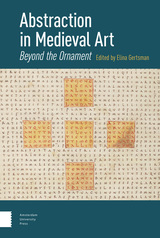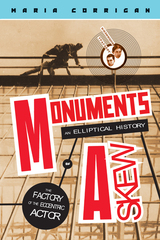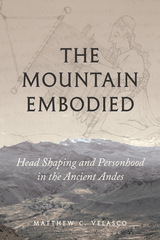5 books about Medieval Art

Abstraction in Medieval Art
Beyond the Ornament
Elina Gertsman
Amsterdam University Press, 2021
Abstraction haunts medieval art, both withdrawing figuration and suggesting elusive presence. How does it make or destroy meaning in the process? Does it suggest the failure of figuration, the faltering of iconography? Does medieval abstraction function because it is imperfect, incomplete, and uncorrected-and therefore cognitively, visually demanding? Is it, conversely, precisely about perfection? To what extent is the abstract predicated on theorization of the unrepresentable and imperceptible? Does medieval abstraction pit aesthetics against metaphysics, or does it enrich it, or frame it, or both? Essays in this collection explore these and other questions that coalesce around three broad themes: medieval abstraction as the untethering of the image from what it purports to represent; abstraction as a vehicle for signification; and abstraction as a form of figuration. Contributors approach the concept of medieval abstraction from a multitude of perspectives-formal, semiotic, iconographic, material, phenomenological, epistemological.
[more]

The Brummer Collection of Medieval Art
Duke University Museum of Art
Caroline Bruzelius and with Jill Meredith
Duke University Press, 1991
The Brummer Collection of Medieval Art in the Duke University Museum of Art is one of the finest to be found in any American university museum. It is remarkable for its breadth and the variety of objects represented, with works varying in scale from monumental stone pieces to small-scale objects in wood, ivory, or metal, and ranging from the seventh to eighth centuries through the sixteenth century. This fine catalog makes available for the first time this rich but little-known collection.
Five studies by leading art scholars focus on key works in the collection and contribute to a new understanding of the origins of many of the pieces. Two introductory essays comment on the character of the collection as a whole, its acquisition by Duke University, and its conservation. Finally, the catalog section discusses the more important pieces in the collection and is followed by a checklist of entries and smaller photographs of all other objects.
Five studies by leading art scholars focus on key works in the collection and contribute to a new understanding of the origins of many of the pieces. Two introductory essays comment on the character of the collection as a whole, its acquisition by Duke University, and its conservation. Finally, the catalog section discusses the more important pieces in the collection and is followed by a checklist of entries and smaller photographs of all other objects.
Contributors. Ilene H. Forsyth, Jean M. French, Dorothy F. Glass, Dieter Kimpel, Jill Meredith, Linda S. Roundhill
[more]

Creation and Creativity in Medieval Art
Illustrating Genesis
Beate Fricke
Amsterdam University Press, 2025
Creation imagery in manuscripts made in the Middle Ages became a locus for visual experimentation as well as the expression of ideas about creativity. By examining representations of divine creation and illustrations of the creation stories in Genesis, this book links medieval ideas about creation, the characteristic of the Divine Creator, and the act of creation with themes in medieval thought about the work of medieval artists.
Case studies from manuscripts illuminating the creation dating from the eleventh to the fourteenth century (Junius 11/The Cædmon Manuscript, Roda Bible & Ripoll Bible, Bible moralisées, Hamburg Bible, Holkhalm Bible) reveal self-reflective moments; where medieval artists relate artistic invention and theological debates about creation. This book traces the artists’ thinking in their own work and then contextualizes those visual cues within the context of philosophical arguments about the creation of the world. It also considers how Western medieval artists, in inventing original illuminations and experimenting with new representational modes, suggest potential analogies between their own work, God’s acts of creation, and nature’s generative force.
Case studies from manuscripts illuminating the creation dating from the eleventh to the fourteenth century (Junius 11/The Cædmon Manuscript, Roda Bible & Ripoll Bible, Bible moralisées, Hamburg Bible, Holkhalm Bible) reveal self-reflective moments; where medieval artists relate artistic invention and theological debates about creation. This book traces the artists’ thinking in their own work and then contextualizes those visual cues within the context of philosophical arguments about the creation of the world. It also considers how Western medieval artists, in inventing original illuminations and experimenting with new representational modes, suggest potential analogies between their own work, God’s acts of creation, and nature’s generative force.
[more]

Image on the Edge
The Margins of Medieval Art
Michael Camille
Harvard University Press, 1992
Camille considers marginalia--in the cathedral, the court, the monastery--in direct and complex relation to the whole work. Ranging through the culture of the Middle Ages, he finds in the margins a distorted yet apt reflection of medieval conventions. It is here that medieval artists found room for experimentation, for parodying, modernizing, and questioning cultural authority without ever undermining it.
[more]

The Medieval Art of Fear
Ravinder S. Binning
University of Chicago Press
A bold new approach to medieval art and architecture’s shaping of psychosomatic experience.
In the medieval world, experiences of fear attained a mystical significance: monks, urban publics, and even emperors pursued horror and grief to explore the limits of fantasy, sensation, and catharsis. In this book, Ravinder S. Binning examines an expansive archive ranging from poetry and scientific treatises to artistic works in ivory and crystal to recover an aesthetic tradition centered on optical tension, spatial suspense, and tactile experience.
Moving between early monastic spaces in Egypt and major urban centers like Constantinople from the fourth through the thirteenth centuries, The Medieval Art of Fear shows how the psychosomatic experience of fear became the deliberate object of mystical practices, meditation, and other embodied techniques across the medieval world. The result is a powerful exploration of the aesthetic effects behind some of the medieval world’s most ambitious works, whose influence extends well beyond the Middle Ages.
In the medieval world, experiences of fear attained a mystical significance: monks, urban publics, and even emperors pursued horror and grief to explore the limits of fantasy, sensation, and catharsis. In this book, Ravinder S. Binning examines an expansive archive ranging from poetry and scientific treatises to artistic works in ivory and crystal to recover an aesthetic tradition centered on optical tension, spatial suspense, and tactile experience.
Moving between early monastic spaces in Egypt and major urban centers like Constantinople from the fourth through the thirteenth centuries, The Medieval Art of Fear shows how the psychosomatic experience of fear became the deliberate object of mystical practices, meditation, and other embodied techniques across the medieval world. The result is a powerful exploration of the aesthetic effects behind some of the medieval world’s most ambitious works, whose influence extends well beyond the Middle Ages.
[more]
READERS
Browse our collection.
PUBLISHERS
See BiblioVault's publisher services.
STUDENT SERVICES
Files for college accessibility offices.
UChicago Accessibility Resources
home | accessibility | search | about | contact us
BiblioVault ® 2001 - 2025
The University of Chicago Press









